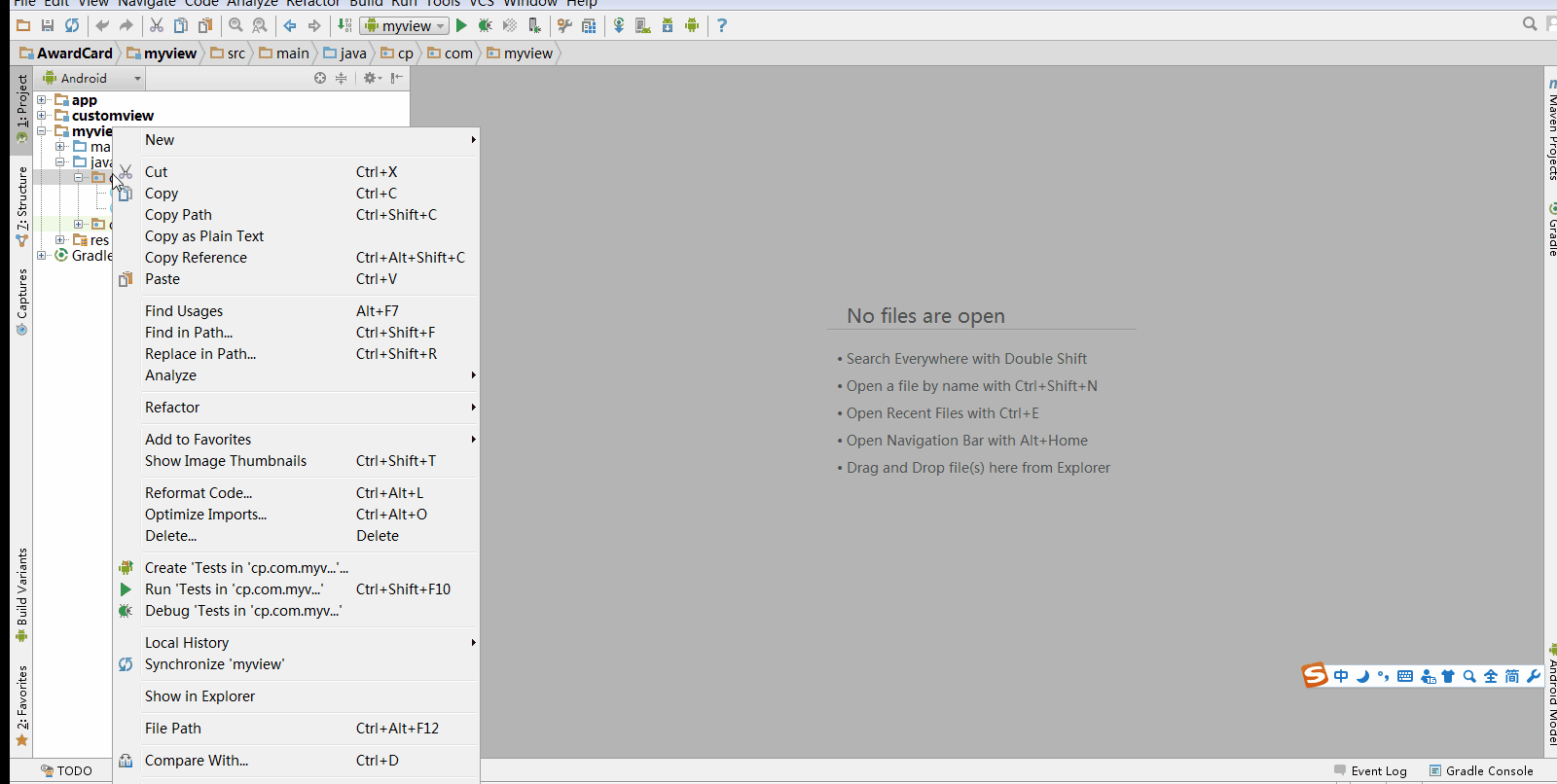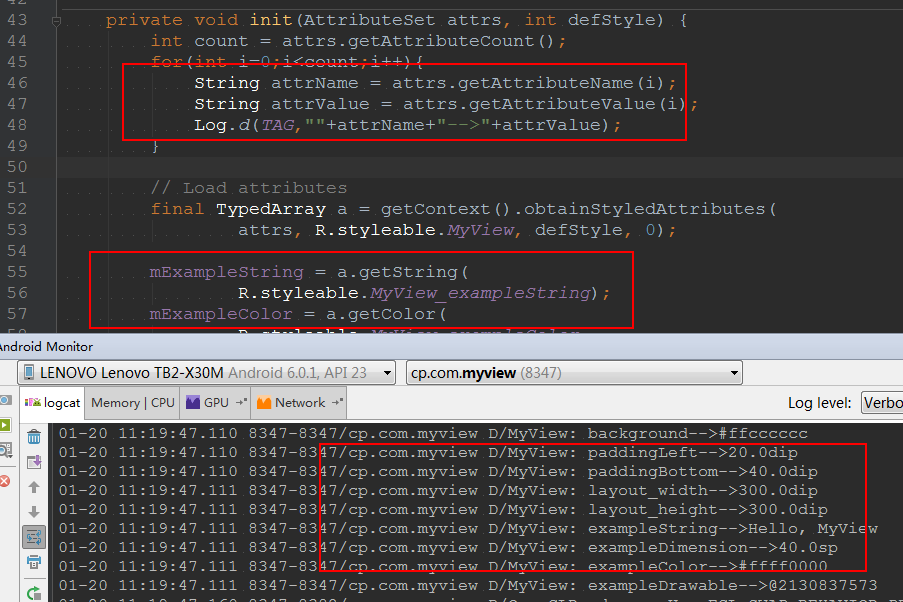引言
Android 自定义属性想必大家都不陌生,参照官方的guide中的步骤
- Define custom attributes for your view in a < declare-styleable> resource element
自定义一个CustomView(extends View ) - Specify values for the attributes in your XML layout
编写values/attrs.xml,在其中编写styleable和item等元素 - Retrieve attribute values at runtime
在布局文件中CustomView使用自定义的属性(注意namespace) - Apply the retrieved attribute values to your view
在CustomView的构造方法中通过TypedArray获取
但,同时也要遵循如下原则
- Conform to Android standards
- Provide custom styleable attributes that work with Android XML layouts
- Send accessibility events
- Be compatible with multiple Android platforms.
自定义属性是如何生效的
常见的自定义属性的例子
Adroid Studio中自定义属性,是很简单的,这里以自定义view属性为例。如下gif图片所示

在自定义的MyView之后,AS自动生成了如下文件
- sample_my_view.xml
这个主要是使用了我们自定义view的一个布局文件。 - attrs_my_view.xml
我们自定义的一些属性所在的xml文件 - MyView.java
我们自定义view的java实现
自定义view属性中文件分析
生成的布局文件分析
所生成的布局文件源码如下所示
<FrameLayout xmlns:android="http://schemas.android.com/apk/res/android"
xmlns:app="http://schemas.android.com/apk/res/cp.com.myview"
android:layout_width="match_parent"
android:layout_height="match_parent">
<cp.com.myview.MyView
android:layout_width="300dp"
android:layout_height="300dp"
android:background="#ccc"
android:paddingBottom="40dp"
android:paddingLeft="20dp"
app:exampleColor="#33b5e5"
app:exampleDimension="24sp"
app:exampleDrawable="@android:drawable/ic_menu_add"
app:exampleString="Hello, MyView" />
</FrameLayout>这里需要注意几点
- 命名空间
xmlns:app=”http://schemas.android.com/apk/res/cp.com.myview”
其中 xmlns就是xml namespace的意思啦。后面的值需要注意的一点,要跟上你的应用程序包名。=”http://schemas.android.com/apk/res/[your package name]” - 使用我们自定义的view组件
cp.com.myview.MyView,如我们刚才自定义的名字空间为app,那么我们在当前MyView标签下,就可以使用app来针对我们所声明的自定义属性进行赋值了。 声明自定义view的自定义属性
我们在 attrs_my_view.xml中声明了自定义MyView的如下属性- exampleString ,类型为 string
- exampleDimension,类型为dimension
- exampleColor,类型为color
当然我们可以定义更多的属性,详细可以参考custom-views_create-view.
<resources> <declare-styleable name="MyView"> <attr name="exampleString" format="string" /> <attr name="exampleDimension" format="dimension" /> <attr name="exampleColor" format="color" /> <attr name="exampleDrawable" format="color|reference" /> </declare-styleable> </resources>
生成的属性文件
<resources>
<declare-styleable name="MyView">
<attr name="exampleString" format="string" />
<attr name="exampleDimension" format="dimension" />
<attr name="exampleColor" format="color" />
<attr name="exampleDrawable" format="color|reference" />
</declare-styleable>
</resources>参考资料
在这里班门弄斧了,详细的可以参考大神的博客,机器Google官方文档
Android 深入理解Android中的自定义属性
http://developer.android.com/intl/zh-cn/training/custom-views/create-view.html























 1万+
1万+

 被折叠的 条评论
为什么被折叠?
被折叠的 条评论
为什么被折叠?








